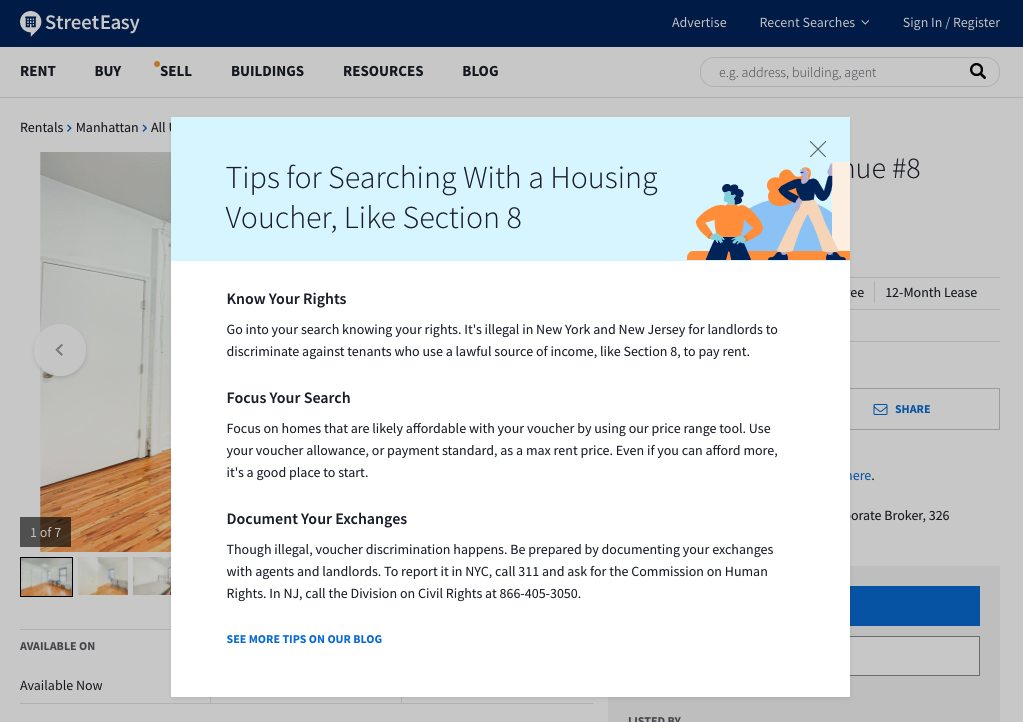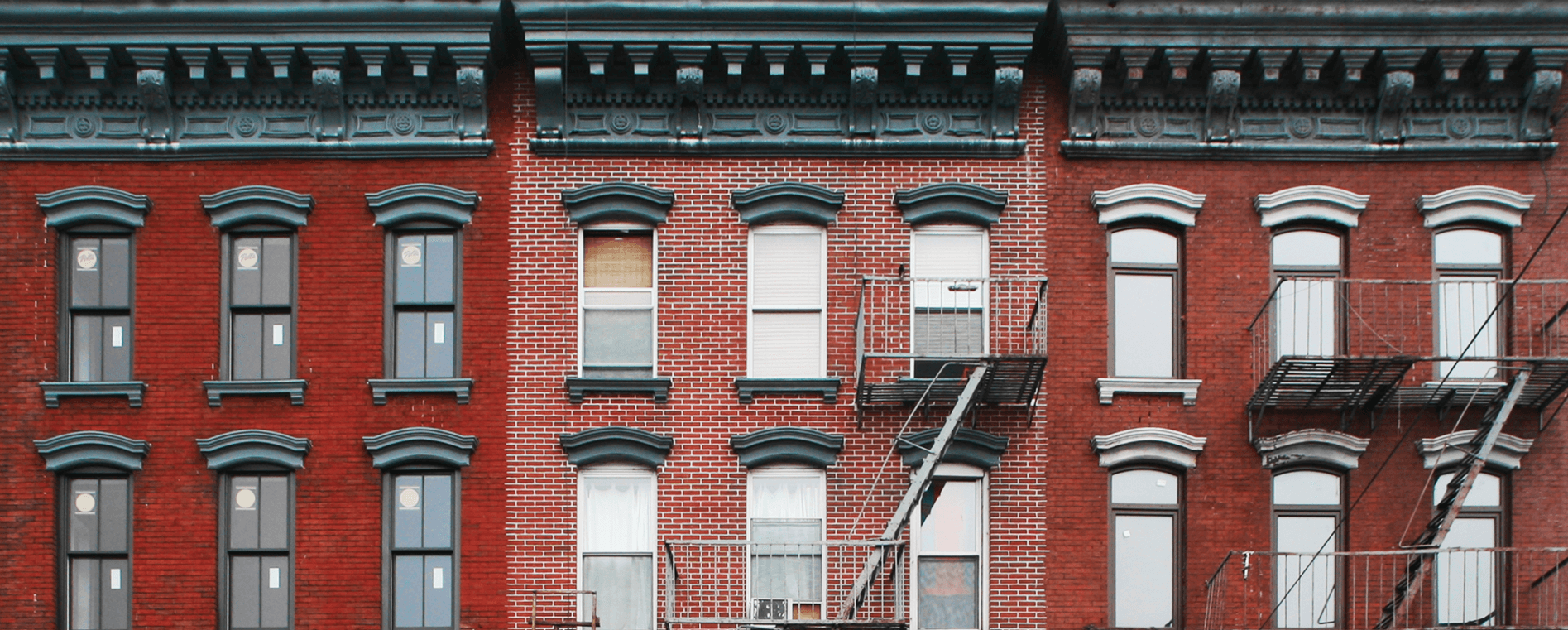StreetEasy® has introduced a new feature that helps inform New Yorkers about their rights as renters, and how to report source of income discrimination. The new data-powered resource is designed to arm renters with information about local laws that protect them, and offer tips on finding and renting apartments that fit their criteria.
There is currently no federal law preventing landlords from rejecting all housing vouchers, but New York City enacted laws against source of income (SOI) discrimination in 2008, followed by New York State in 2019. The 2008 law was expanded in 2021 and made most of NYC’s rentals subject to the city’s SOI discrimination laws. The New Jersey Law Against Discrimination was amended to include source of income discrimination in 2002.
Still, many voucher holders may not be fully aware of their rights and that the vast majority of rentals in NYC are covered by SOI laws. In fact, in a recent StreetEasy survey, 26% of respondents indicated that knowing their rights as a tenant was one of their biggest pain points in the rental process. This latest StreetEasy feature aims to help change that.

“Our goal is to make the process of shopping for a home smoother for all New Yorkers, regardless of how they pay for that home, and help remove barriers that prevent New Yorkers from getting into a home they love,” said Caroline Burton, VP & General Manager of StreetEasy. “By adding this information directly onto rental listings, we can empower renters to educate themselves about voucher programs and the local laws that protect voucher holders from housing discrimination.
Why Is This Important?
StreetEasy data shows that lower rents and high inventory levels caused by COVID-19 have nearly doubled the number of homes on the market in NYC that are affordable for Section 8 Housing Choice Voucher participants in the first half of 2021, compared to the same time period in 2019. In the first half of 2019, there were 39,347 homes eligible within the Section 8 payment standards. In 2021 this increased to 72,522 homes. This is welcome news, and opens up lots of new inventory across the city for voucher holders, but the core challenges still remain.
Housing Choice Vouchers are a crucial and underfunded form of assistance for low-income renters. The New York City metropolitan area has roughly 6.7 times as many rent-burdened households as there are vouchers, according to recent research by Zillow, StreetEasy’s parent company.
These same renter households have been particularly hard-hit by the pandemic. The likelihood of job loss, on top of their existing higher housing cost burdens and lower incomes, means renter households have borne the brunt of the economic fallout caused by COVID-19.
“Housing is a human right, yet far too often low-income New Yorkers are unable to find a decent place to live,” said Alyssa Aguilera, Co-Executive Director, VOCAL-NY. “The recent expansion of NYC’s rental assistance program will help change that, but only if landlords and brokers follow the law. This new tool from StreetEasy will help get the word out that source of income discrimination is illegal — and we hope it will help homeless New Yorkers find the homes they deserve.”
StreetEasy and Zillow believe everyone deserves to find a place to call home, regardless of race, color, ethnicity, national origin, religion, sex, familial status, language, sexual orientation, gender identity, age, disability, or other legally protected status. StreetEasy is actively investing in more resources, content, and tools to help improve access and address existing inequalities in NYC housing.







